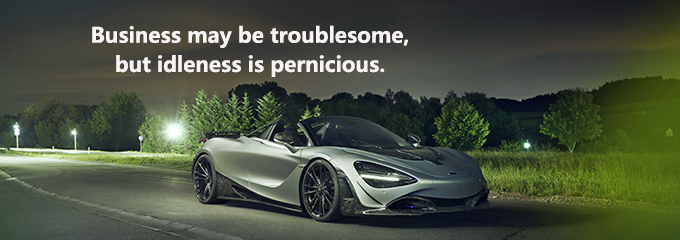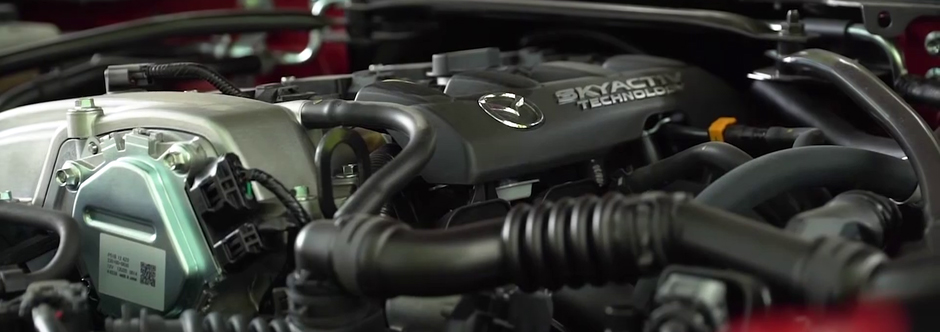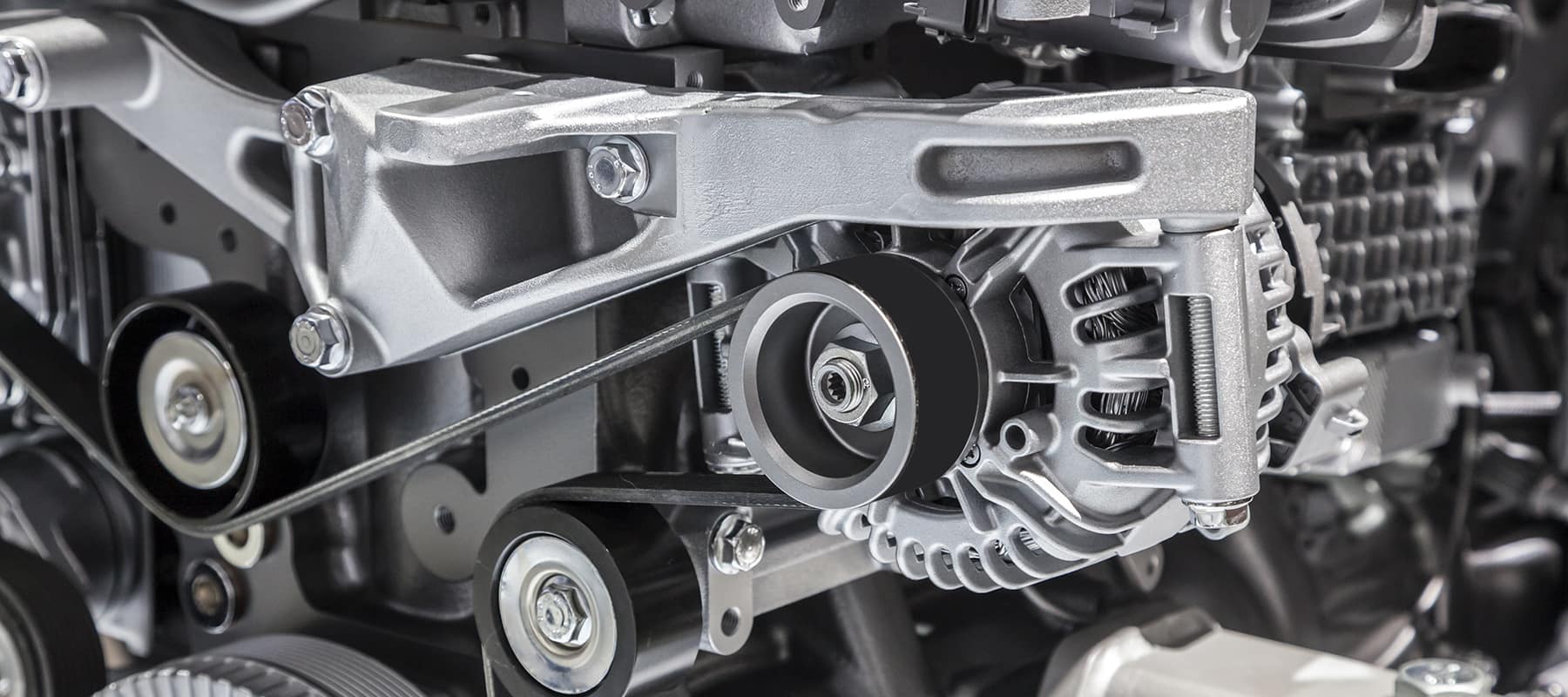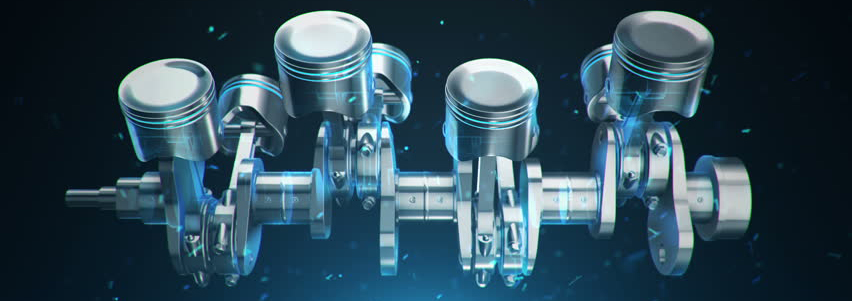
When the engine works, the ignition timing has a significant impact on the engine's performance. Advance ignition is that the spark plug generates sparks to ignite the combustible mixture in the combustion chamber before the piston reaches the top dead center. The crankshaft angle of rotation that goes from the ignition moment to the time that the piston reaches the top dead center is called the ignition advance angle.
1. Optimum ignition advance angle
2.3 Air-fuel ratio feedback rectification
2.4 Idle speed stability rectification
1. Optimum ignition advance angle
The ignition advance angle that can make the engine obtain the best power, economy and emission is called the optimum ignition advance angle.
For modern automobiles, the optimum ignition advance angle must not only ensure the best value of engine power and economy, but also minimize the emission of harmful substances in the exhaust.
The optimum ignition advance angle controlled by the distributorless electronic ignition system usually contains three parts: initial ignition advance angle, basic ignition advance angle and rectified ignition advance angle.
That is: Actual ignition advance angle = initial ignition advance angle + basic ignition advance angle + rectified ignition advance angle.
The initial ignition advance angle is determined by the engine structure and the installation position of the crankshaft position sensor. It is the angle that is not corrected by the electronic control unit. The value is usually a fixed one. It varies with the car model or engine type.
The electronic control unit of some engines sets the first Ne signal over zero after the G1 or G2 signal appears as 10° before the top dead center of the compression stroke. This angle is used as the reference point for ignition timing.
The electronic control unit determines the basic ignition advance angle according to the engine speed and load. It is the most essential ignition advance angle in engine operation.

When the idle contact in the throttle position sensor is closed, the engine is in idle running condition. The electronic control unit determines the basic ignition advance angle according to the engine speed and whether the air conditioning switch is on or not.
When the idle contact in the throttle position sensor is opened, the engine is in normal running condition. The electronic control unit obtains the engine condition information through the engine speed and load sensors. The system derives the optimum ignition advance angle from the data in the memory according to the engine condition.
The optimum basic ignition advance angle for the engine under various operating conditions is obtained through extensive bench tests. The test data is optimized to make an ignition advance angle control pulse spectrum and stored in the memory of the electronic control unit.
In addition to speed and load, other factors that substantially influence the ignition advance angle are grouped into the rectified ignition advance angle.
The electronic control unit shows the corresponding correction values according to the signals from the relevant sensors. Their algebraic sum is the rectified ignition advance angle.
The rectification of ignition advance angle contains warm-up rectification, overheat rectification, air-fuel ratio feedback rectification, and idle speed stability rectification. We introduce these modes separately in the following article.
In order to improve the engine's low temperature starting performance, the ignition advance angle should be appropriately increased when the coolant temperature is low.

During the warm-up process, as the coolant temperature increases, the rectification value of the ignition advance angle gradually decreases. The changing pattern and rectification value vary with the coolant temperature signal, airflow signal and throttle position signal of the engine.
When the engine is in normal operating conditions (idle contact is open), if the coolant temperature is too high, it may cause engine ping. To avoid detonation, the ignition advance angle should be delayed appropriately.
The engine is in an idling condition (idle contact closed). If the engine coolant temperature is too high, the ignition advance angle should be appropriate to increase to avoid the engine overheating for a long time.
2.3 Air-fuel ratio feedback rectification
In the electronically controlled engine with an oxygen sensor installed, the electronic control unit can increase or decrease the fuel injection according to the signal from the oxygen sensor to keep the air-fuel ratio at about 14.7.
With the increase and decrease of the corrected injection amount, the engine speed will also change. In order to improve the stability of the engine speed, the ignition advance angle should be increased appropriately while reducing the injection amount.
2.4 Idle speed stability rectification
When the engine is running under idling conditions, the unstable load may cause the speed to change. In order to maintain a stable idle speed, the electronic control unit should adjust the ignition advance angle appropriately.
When the engine is at idle speed, the electronic control unit calculates the average speed of the engine. When the engine speed is lower than the specified idle speed, the electronic control unit increases the ignition advance angle according to the difference between the actual speed and the target speed. When the engine speed is higher than the target speed, the ignition advance angle is reduced accordingly.
The control mode of ignition advance angle is open-loop control and closed-loop control.
Open-loop control is that the electronic control unit sense the corresponding basic ignition advance angle from the internal memory according to the relevant sensor information provided by the engine operating conditions.
In the next step, the engine's abnormal operating condition is rectified. The optimum ignition advance angle is derived to control the ignition system.

The open-loop control mode of ignition advance angle is fast and straightforward. However, the control accuracy depends on the accuracy of each sensor. As a result, any deviation of the sensor may make the engine deviate from the optimal ignition moment.
In addition, some factors will also cause some impact on the engine, such as increased carbon deposits, low octane value of fuel caused by engine knocking, engine speed fluctuations due to unstable load at idle speed, wear and tear in use and improper adjustment of the ignition advance angle.
The open-loop control mode cannot adjust the ignition advance angle timely and accurately according to the above changes, thus affecting its control accuracy.
The closed-loop control method can detect the relevant working conditions of the engine while controlling the ignition advance angle, such as whether the engine is bursting, whether the idling speed is stable, etc.
Then, according to the detection results, the ignition advance angle can be further corrected in time, so that the engine is always in the best ignition condition. This mode is basically not affected by the interfering factors. High control accuracy can be ensured.
The main closed-loop control modes are detonation control and idle speed stabilization control.
The most significant factor affecting the advance ignition is the engine speed. As the speed rises, the time to turn the same angle becomes shorter. Only a larger advance angle can get the corresponding advance time.
The theoretical minimum ignition advance angle is 0 degrees. However, in order to prevent the ignition of the mixture only during the work stroke (which causes a loss of power), the ignition advance angle is often set to 5 degrees or more, which is the angle required for starting speed.
The maximum ignition advance angle should not be too large. It generally can't be more than 60 degrees. Otherwise, the problems of vibration and temperature rise will be highlighted. The efficiency will be reduced.
Too early ignition will cause engine knocking, obstruction of the piston movement, lower efficiency, increased thermal load, mechanical load, car noise and vibration. These symptoms should be prevented.

Too late ignition results in difficult gas work, high fuel consumption, low efficiency and loud exhaust noise. Whether it is too early or too late, it will affect the efficiency of the engine.
Except for the engine speed, the optimal ignition angle is also influenced by many other factors.
● Temperature and pressure in cylinder
The higher the cylinder temperature and pressure, the faster the mixture is burned, the smaller the ignition advance angle. The factors that affect the cylinder temperature and pressure are engine compression ratio, air temperature, cylinder temperature, load, etc.
● Gasoline octane value
It is also known as the gasoline grade. The higher-grade means that the gasoline is more resistant to detonation, which allows a greater ignition advance angle.
● Air-fuel ratio
The too rich and too thin mixture will slow down the combustion speed. The ignition advance angle needs to be increased. The air-fuel mixture ratio mainly depends on the throttling threshold, altitude, etc.
Vehicle engines are equipped with knock sensors. The ECU will control the ignition system to reduce the ignition advance angle when the detection is tested.
It isn't easy to complete the relatively complex and accurate modulation by the traditional mechanical ignition. Only microcomputer ignition can achieve the optimum ignition advance angle with high speed, accuracy and stability.
 Lauritz Carolsfeld
Lauritz Carolsfeld  November 30, 2021
November 30, 2021